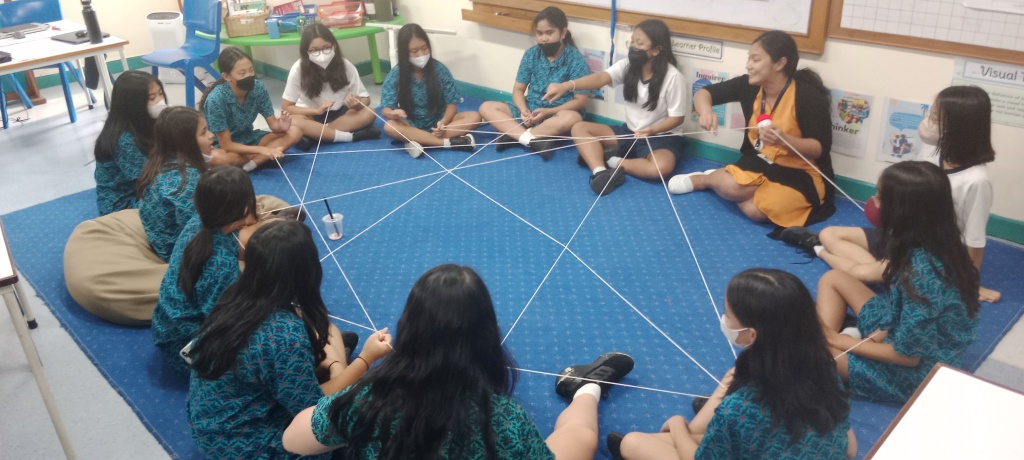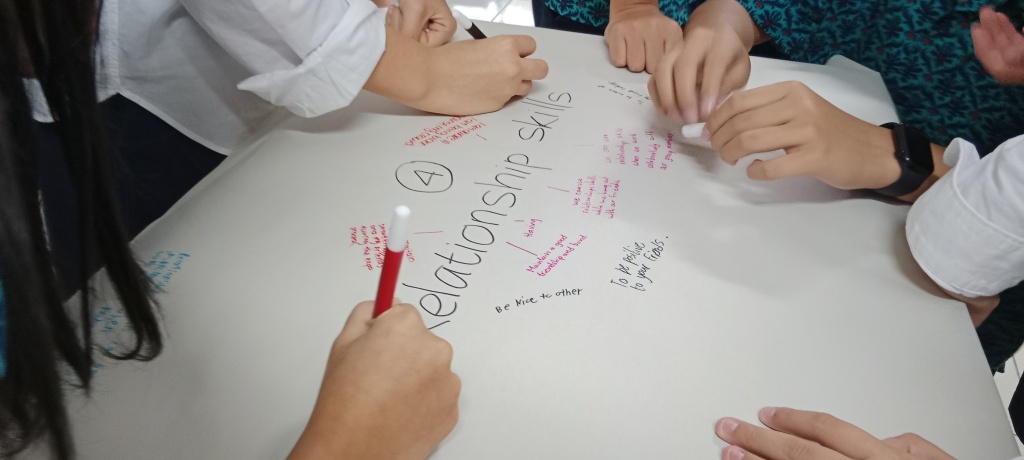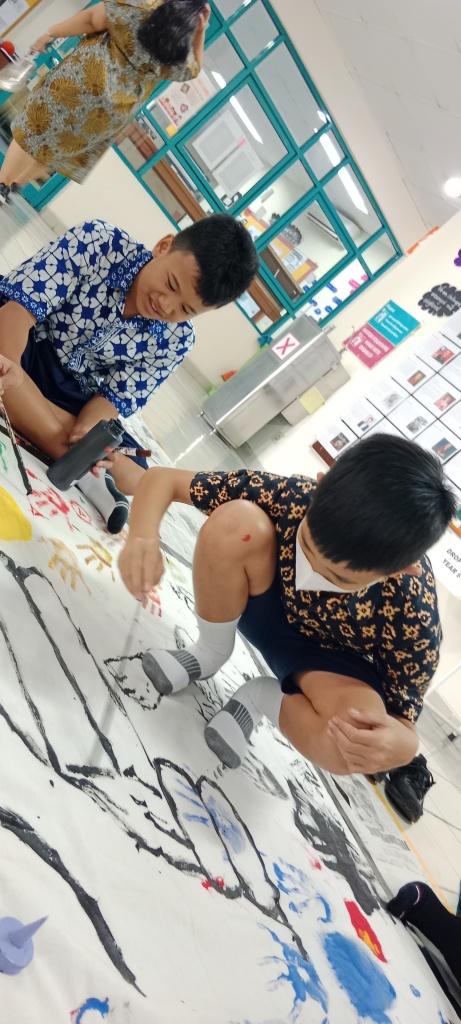Month: August 2023
Empowering readers – How agency has motivated our students to read
The numbers are staggering: According to Unesco data, the Indonesian reading interest rate is very low: 0.001%, which means that out of 1000 Indonesians, only one is interested in reading (as cited in Perpustakaan, 2022). Similar studies reveal that reading around the globe has been declining substantially, especially amongst the youth who demonstrate a preference for electronic media. The pandemic only aggravated the already worrisome scenario: while the time spent on electronic media has skyrocketed among children and teenagers, reading time has declined or remained flat depending on the cultural context.
Our context
At Sekolah Ciputra, the challenges are not different. Most of my PYP 1 students (Grade 1) told me that they did not like reading in their first days back in school. Increased reading performance is an area of focus across the continuum as we agree that reading is one of the most important transdisciplinary skills. Taken aback by my students’ comments about not being that interested in reading, I decided to take action. As I believe that no one can be taught to like something, I have chosen agency to inspire my potential future avid readers.
There is nothing new about the system implemented in PYP1. Students have taken books home to read with their families since last year but, unlike 2022/2023, students are now in charge of selecting the books they are going to read. They also have a special place to carry their written treasures, named book pouches by this author. Finally, students now know what good-fit books are. These agentic twists in the system have been promising.
Book pouches
Decorating their book pouches set the tone of the importance and value of what was going to be carried inside. My students used their creativity and took their time to personalize their pouches without pressure – which led some of them to take a few days to finish off. However, I felt it was important for them to feel proud and take ownership of their pouches.
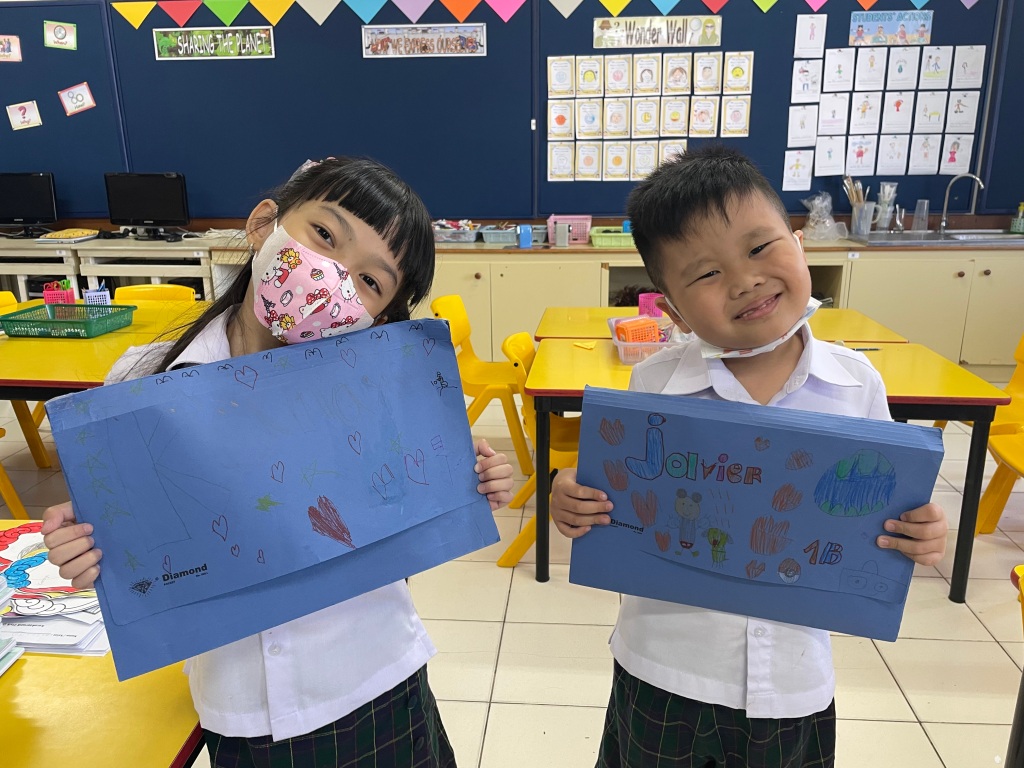

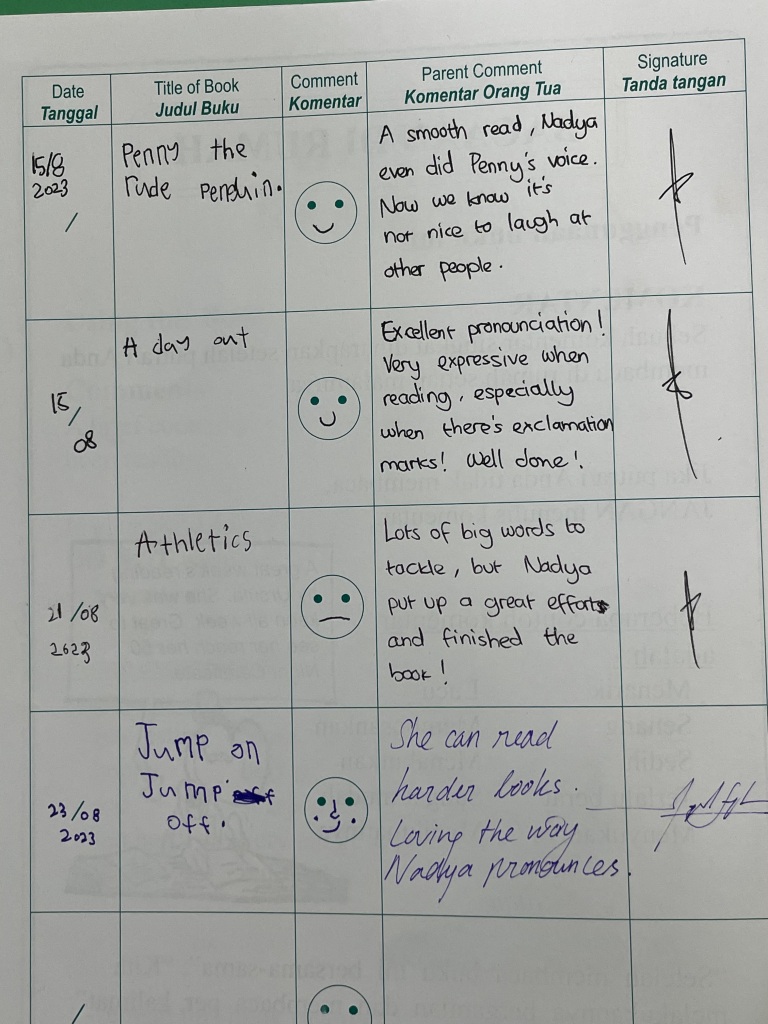
Home reading
My young readers are encouraged to read aloud to their parents at home and are allowed to keep their books for as long as they need. Their home reading is documented on a reading log, where parents have a chance to leave me a message if they wish. My initial expectation was based on last year’s experience, when students read 2 books per week – not to mention the ones who never read or lost their books. I was pleasantly surprised to witness a tripled reading rate and parent participation in the reading log.
“Shopping” for books
When students are ready to borrow new books, it is their responsibility to return the previous 2 books and choose 2 others. We call this system “shopping for books”. The Book Shop is located in the Literacy Area down our corridor, and students can independently find the colour-coded book holder with their good-fit books (explained below). PYP 1 teachers are delighted to see our students’ independence and motivation. Some of our students exchange books every day! As they do it, they browse through the books available and make comments such as “This looks fun”, “Oh no, this is too hard/easy”, and the best “Can I read it now?”.


Good-fit books
A discussion with my 6 and 7-year-olds about good-fit or the Goldilocks-type of book has been fruitful. A book that is too easy or too hard will most likely be a reading-joy killer. My students now understand why they shop at different bookholder colours and the importance of finding the “just-right” book. This knowledge has also been transferred to selecting books during their visits to the library and, out of the three books borrowed, at least one is a good-fit book. Hence the importance of having varied titles and levels readily available, including non-fiction. Finding a book that interests them and that they can actually read is a crucial step to motivating students.

Words for thought
Trusting that our students can and should be in charge of their reading has empowered them to be more independent, responsible, and motivated. Very often, teachers (myself included) want to get everything ready for students to optimize learning and teaching time. However, by doing so, we are also limiting their chances to think for themselves, choose, act, and reflect.
Agency in the “little things” can lead to big results. In our case, reading motivation and parental involvement. After 4 weeks of systematic home reading, it is too soon to gather quantitative data to measure the impact on student performance. However, we believe that consistency in the programme will inevitably lead to a positive impact. As we continue to strengthen this system in PYP 1, we plan to extend it across Primary.
We will be back to reveal qualitative and quantitative data, so stay tuned!
Reference:
Perpustakaan. (2022, August 9). Reading Interest in Indonesia – Perpustakaan. Perpustakaan UNJ. http://lib.unj.ac.id/en/reading-interest-in-indonesia/
Bianca Starck
ATL Coordinator and PYP 1 Teacher
Sekolah Ciputra
Surabaya, Indonesia
PYP Exhibition at Global Jaya School
How the PYP Exhibition is Organised
The PYP exhibition takes place in the final year of the PYP at GJS, Year 6. Our PYPX is outside the Programme of Inquiry (POI), where students were involved in a self-initiated inquiry with local and global significance. Students engage in a collaborative transdisciplinary inquiry process that involves identifying, investigating and offering solutions to real-life issues or problems. The PYP Exhibition is an opportunity for students to demonstrate the attributes of the IB Learner Profile. Students also need to demonstrate engagement with an understanding of the elements of the programme.
The PYP Exhibition process starts at the beginning of the academic year when the PYP Coordinator and the Year 6 teachers plan an Exhibition timeline. Lesson plans are designed weekly to introduce the concept and assist and prepare students to reach expected results. The reason is the number of things we must consider when designing the lessons. We incorporate Social Emotional Learning (SEL) through the CASEL framework.



Coordination between staff, students, and parents.
To ensure we get the most effective and efficient support for the students during the exhibition, the Year 6 teachers conduct exhibition workshops for the Year 6 parents and the Primary staff. The workshops focus on the process, expectations and some student activities and provide practical experiences and understanding for all involved regarding the exhibition journey. The Year 6 teachers encourage both Primary and Secondary teachers to become mentors for individual groups. They are asked to express interest by contacting the Exhibition Mentor Coordinator (Year 6 teacher). Meetings with mentors are held weekly to discuss the procedures, guidelines and expectations. Once the students are paired with a mentor, they must arrange a regular meeting schedule to establish reasonable and attainable goals.

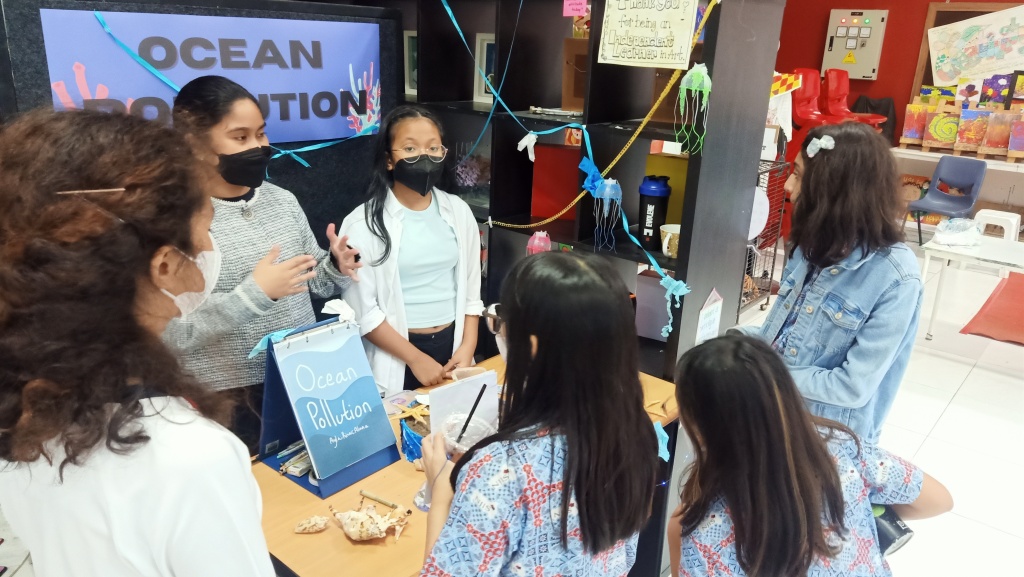
The PYP Exhibition Process
Since our PYPX is outside the POI, the Year 6 team has allocated four weeks of the blank timetable for the students to create solid work. The PYP Coordinator and the Year 6 teachers are individually in charge of a group of students. These groups are based on the similarities of the student’s interests. Individual students create their learning goals for the week along with the deadline. Feedback and feedforward are continuously given to individual students to develop their ongoing understanding of their chosen topic. Students are also encouraged to reflect every week.
The PYP Exhibition Day
The event is staged over three days; one day is allocated for virtual presentation, and the other two days start with an opening, including Music and Visual Art integration through student performances. Students present their learning journey through various media, focusing on demonstrating actions. The Exhibition is shared with the school community and other schools from Jakarta and beyond.


Windy Hartono
PYP Coordinator
Embracing Diversity: BINUS SCHOOL Simprug Parade of Nations Celebration
The unwavering commitment of BINUS School Simprug to fostering innovation and enriching the school community was realized with a truly remarkable launching event, “The PYP Parade of Nations,” which took place on August 2, 2023.
The primary objectives of this event were to unite Primary Years Programme students with their fellow BINUSians from diverse nationalities, promote cultural diversity, and nurture mutual respect for each other’s unique traditions and beliefs.
Mr. Isaac Koh, BINUS SCHOOL Simprug principal, noted that the presence of students from different nationalities at the school had a positive impact on language learning for everyone. Mr. Isaac also emphasized that the “Parade of Nations” encourages everyone to be open-minded, one of the attributes of the IB learner profile.
Ms. Richel Langit-Dursin, BINUS SCHOOL Simprug early years and elementary vice principal and PYP coordinator, proposed the idea of organizing the “Parade of Nations” assembly. She emphasized that the focus of the special event is on celebrating individual identities, appreciating the diverse backgrounds of the students and other members of the school community, and valuing our roots. Ms. Richel also pointed out that the flags representing different countries symbolize stories of courage, perseverance, resilience, and hope, inspiring students to learn from these experiences. Lastly, she stressed the continuous celebration and promotion of diversity, fostering a safe and all-inclusive learning environment for everyone.
During the “Parade of Nations” assembly, early years and elementary students graced the stage, warmly greeting everyone in their respective home languages. The school’s multicultural community boasted an impressive array of 19 countries, including Russia, France, United States, Italy, Singapore, the United Kingdom, New Zealand, Pakistan, Malaysia, Thailand, Taiwan, Hong Kong, Australia, Japan, the Philippines, China, India, Korea, and Indonesia. Notably, Indonesia had the highest percentage of students.
Adding excitement to the “Parade of Nations”, the grade 3 students performed a traditional dance called “Adowa” from Ghana, Africa. This lively and rhythmic dance showcased expressive hand movements and coordinated steps, symbolizing the rich culture and unity of the Ashanti people. Shifting gears, the grade 1 students presented a cultural song with a vibrant melody that encouraged children to warmly greet and embrace others from diverse cultures, backgrounds, and places. The song titled, “Hello to All the Children of the World”, promotes the idea that regardless of our origins, we can all be friends and learn from each other’s distinct experiences.


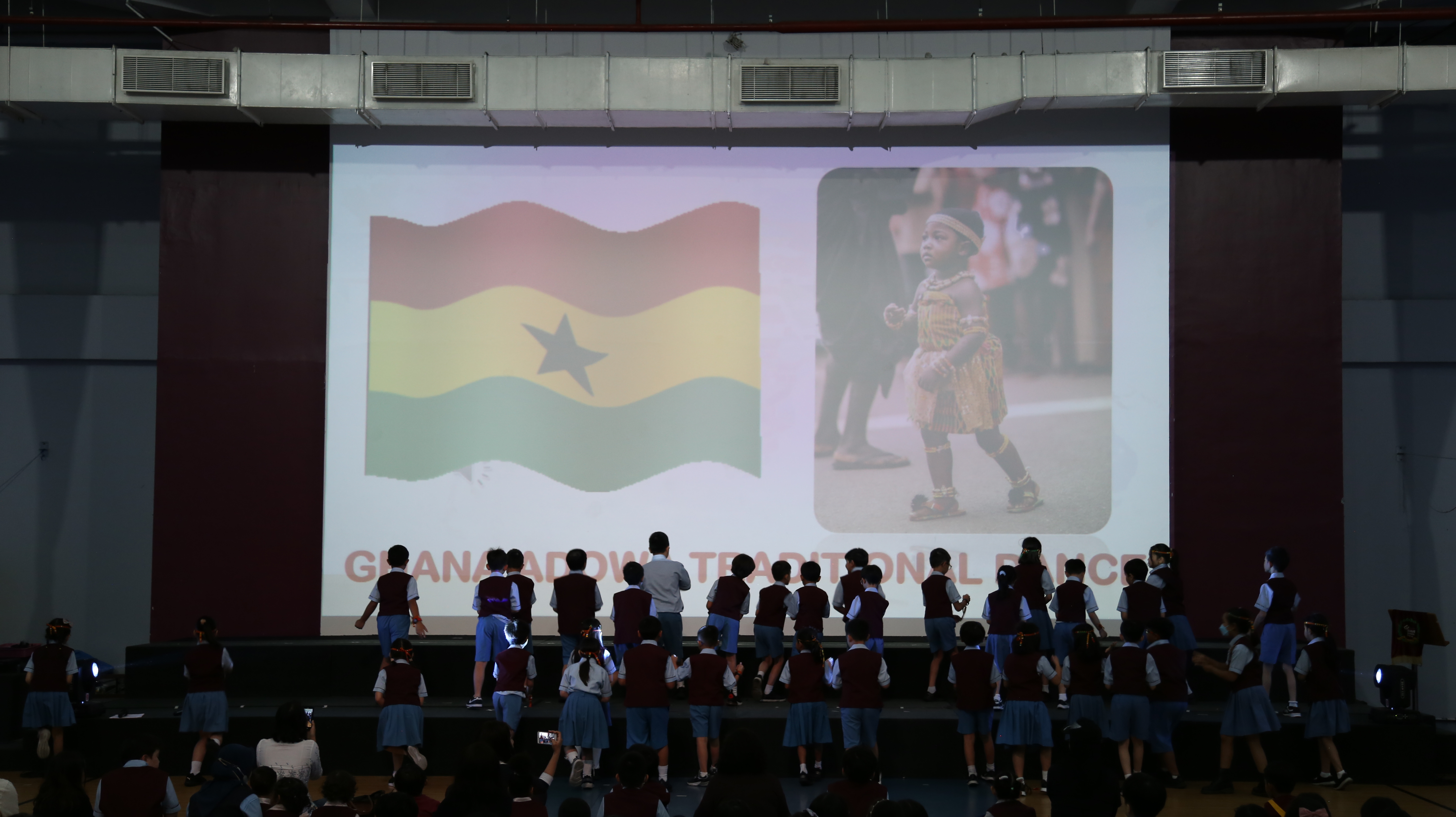
The nature of the “Parade of Nations” lies in its representation of unity, understanding, and love prevailing among all, regardless of ethnicity, language, background, or upbringing, through mutual respect. This event has a significant impact on the school community by encouraging students, teachers, and parents to embrace diversity, unity, and mutual respect. It also fosters a positive learning environment, preparing students to become responsible and compassionate global citizens.
BINUS SCHOOL Simprug teachers from grade 1 and grade 3 collaborated in organizing the Parade of Nations, resulting in an unforgettable experience for everyone.
By: Zaida Puyo
Grade 3 Level Head
BINUS SCHOOL Simprug
zpuyo@binus.edu

